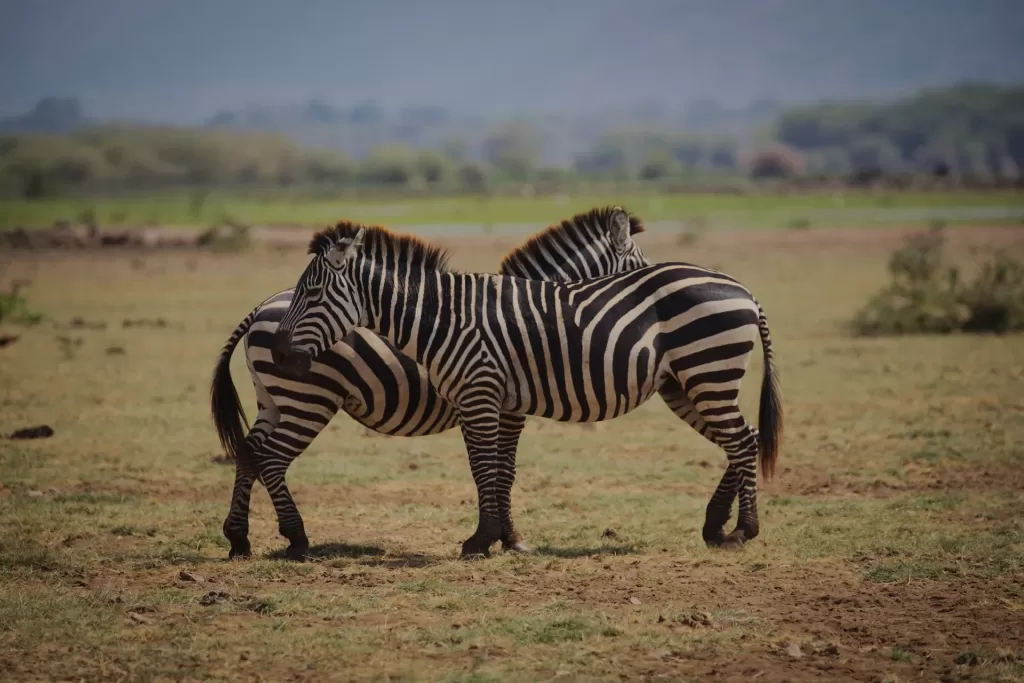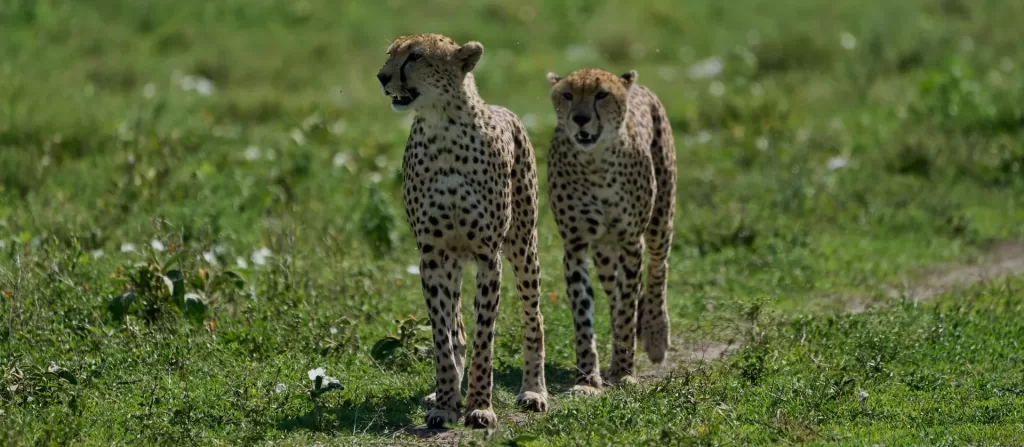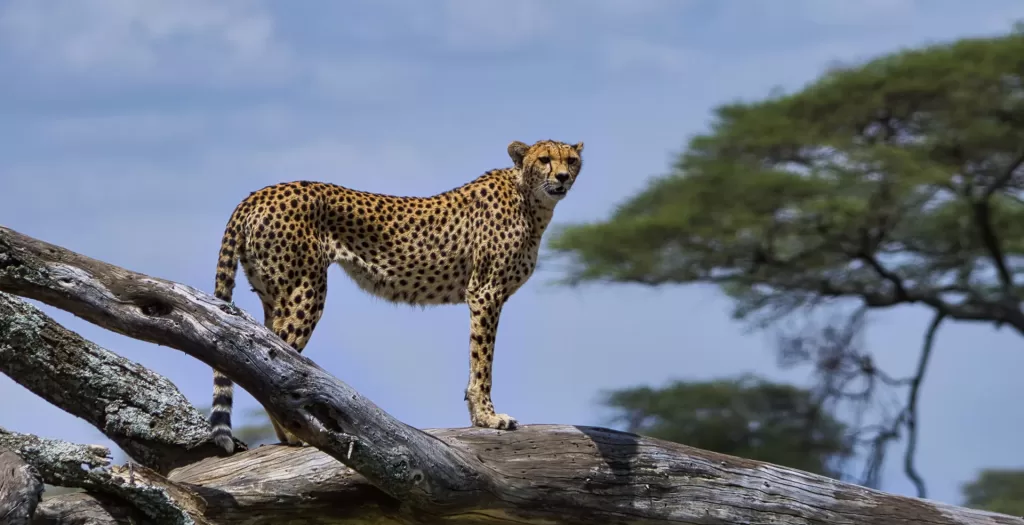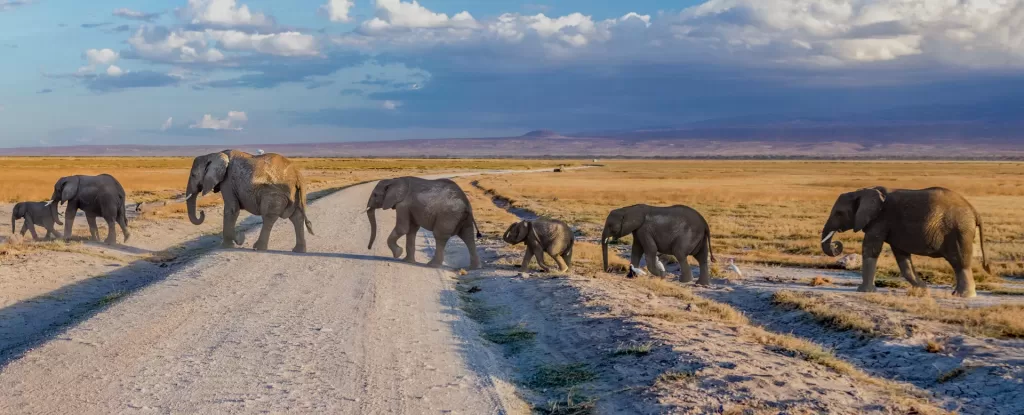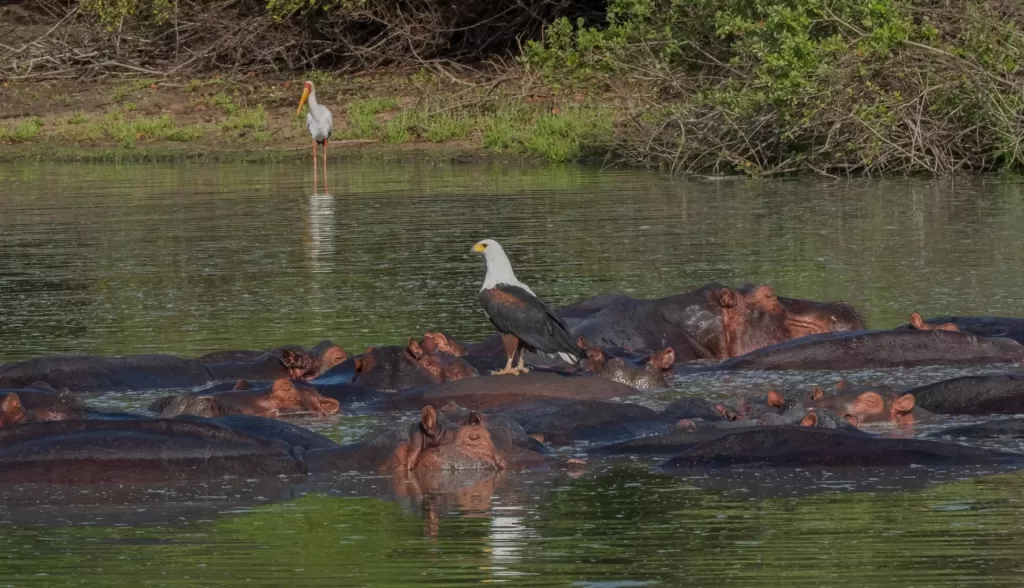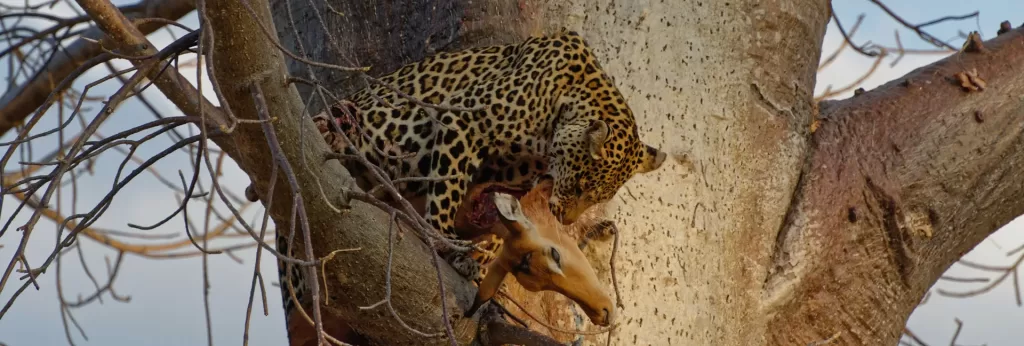Lake Manyara National Park
Lake Manyara National Park in Tanzania is home to the Tree-Climbing Lions and lies at the foot of the Great Rift Valley escarpment covering 330 sq km. Lake Manyara is a shallow alkaline lake, the northwest of which is protected by the park.
The park has a remarkably wide diversity of terrestrial habitats and ecosystems that include forests, wetlands, floodplains, hot springs, open savannahs, and acacia woodland. Hemingway described Lake Manyara National Park as “The Green Hills of Africa”.
Lake Manyara National Park is famous for its tree-climbing lions and its underground water forest supports many lives especially the primates like the blue monkeys, baboon troops, and vervet monkeys among others.
The game in the park includes zebra, hippo, elephant, vervet monkey, wildebeest, gazelle, Masai giraffe, grey duiker, oribi, hyena, waterbuck, warthog, buffalo, and impala among others.
Hot water springs that are 70 degrees are one of the rare geological features that give visitors to this area an opportunity to explore. For birdwatchers, the Park is a paradise with more than 350 species of birds identified.
Things to do in Lake Manyara National Park
Game safaris – Incredible tree-climbing lions and herds of elephants.
Lake Manyara National Park is a magnificent terrain. Lake Manyara National Park has beautiful Lake Manyara giving the park a good reliable water supply all year round. This puts the animals here in prime condition and wildlife viewing becomes very exciting. The lakeshore to admire has different bird species among which are the pink flamingos.
The rest of the Manyara ecosystem consists of the mountainside, marshlands, woodlands, grassy areas, and hot springs. You will drive mainly through acacia woodlands, grassy floodplains, and tall forests in search of wildlife; including the famous tree-climbing lions and large family herds of elephants.
Canoeing on Lake Manyara
Take a canoe tour for 2. 5 hours exploring the lake in a two-man canoe, visitors row quietly along the shoreline from the protected shallow waters of this magnificent soda lake. You will be able to get up close and personal with dozens of aquatic species and species of birds such as the pink flamingoes at the lake shore.
Lake Manyara National Park is also home to several giraffes, buffaloes, and elephants all of which can be seen with a closer look as you canoe past them into the serene waters.
Mountain Biking through farms in Mto Wa Mbu
Mountain biking ride for 2 hours taking you through the farming village of Mto Wa Mbu. On this ride, you visit local farms, schools, churches, milling machines a local bar and enjoy the sights and sounds of this vibrant village life. Ideal to do on the way in or out of Manyara National Park.
Excellent birdwatching with 400 bird species
The shallow alkaline lake is home to about 400 bird species among which are the large flocks of flamingos and birds of prey. Look out for spectacular species such as the Grey crowned crane, Fischer’s sparrow lark, pink lesser flamingos, and the Crowned Plover, silvery cheeked hornbill, black-faced sand grouse, crowned plover, Fischer’s sparrow hawk, Egyptian goose, southern pochard.
Other bird species in Lake Manyara National Park include Hottentot teal, African black duck, northern shoveler, yellow-billed duck, Cape teal, ground-dwelling crested guinea fowl, helmeted Guinea fowl, harlequin quail, scaly francolin, yellow-necked spurfowl, grey-breasted spurfowl, black cuckoo, common cuckoo, African cuckoo.
Manyara Treetop Walkway – 370m airwalk through the canopy of the forest.
Take a thrilling sky-high adventure straight through the forest on a 370 m airwalk traversing the treetops and taking in the scenery of the forest. The treetop walkway starts right from the short boardwalk and eventually rises in altitude leading to a series of suspension bridges with secure netting on either side.
During this walk, guides will point out interesting facts about the Lake Manyara flora and fauna, while you can enjoy a unique birds-eye view of the world around you.
Night Game Drive in Lake Manyara National Park
A whole new world of animal species (nocturnal) awaits you on a night game drive. It gives you a different perspective of the park and wildlife. Lake Manyara is the ideal location for this activity the many different ecosystems found in the park.
The area is a melting pot for all types of animals and plants – with the lake, the Rift Valley cliffs, ground water forest, the Ngorongoro highlands, and the dry Tarangire system all close by.
The less-seen animals are generally active at night and Lake Manyara National Park is full of them! Porcupines, genets, and civet cats are frequent visitors to the forest. Hippos are nocturnal animals and you likely get to see many of them grazing on the side of the road. You probably already know that it is not a common occurrence to spot elusive and solitary Leopards.
Community-Based Tours / Cultural Tours
Visit Maasai Bombas and Maasai dancing
Take a 2.5-hour tour of a Maasai Community learning more about their way of life, their traditional homesteads, and their traditional music and dance performances.
Take a 2.5- 3-hour village walk, and visit Mto wa Mbu, a small town that is adjacent to the park. Visiting this rural market town is a great way to immerse yourself in semi-rural Tanzanian life. Mto wa Mbu’s is a melting pot of local tribes, and you can try a local banana beer bar, visit a brewery or a farm, and enjoy a traditional Tanzanian meal.
Where to stay at Lake Manyara National Park
Lake Manyara Kilimamoja
Lake Manyara Kilimamoja Lodge is situated on the edge of the great African Rift Valley. From there, you have a breathtaking view over Lake Manyara, and Mount Meru, and on a clear day, you can see Mount Kilimanjaro, Mt. Meru, and Lake Manyara.
There are 24 deluxe twin suites, 24 deluxe double suites, and 2 luxury bedroom villas. All 50 suites offer you a great panoramic view of the surroundings. All the rooms are tastefully decorated and offer modern guest facilities and amenities, including indoor and outdoor showers, air-conditioning, fireplaces, Wi-Fi, a mini bar, an in-room safe, and a private verandah. In the main building, you will also find a large lounge and a large reception hall. A dining room with a restaurant, fitness & wellness, a boutique, a conference room, a media room with TV, etc., a billiard room and various other entertainment options, an internet café, and a playroom for the children can also be found there.
Lake Manyara Tree Lodge
Lake Manyara Tree Lodge is located inside Lake Manyara National Park on the southern border of the park, nestled in the mahogany forest blending well into the natural beauty of its breathtaking surroundings, about a kilometer from the lakeshore, and 150 km from Arusha town.
The lodge consists of 10 spacious tree houses crafted from local timber and palm fronds. Each tree house suite features ensuite bathrooms with tubs and outdoor showers, large open decks and spacious rooms with large windows, overhead fans, mosquito nets, private verandas with comfortable furniture extensive views of the lovely forest environment, and private butler service.
Other facilities include an interactive kitchen that allows guests to observe the preparation of their meals; an open-air boma dining area, and private viewing decks. The lodge also offers night game drives, bird watching, picnics or breakfast on the lakeshore, and massages.
Lake Manyara Wildlife Safari Camp
The camp is located outside the park on the northern shore of Lake Manyara, with spectacular views of the steep 600-meter-high Great Rift Valley escarpment and beautiful sunsets to the west. It is about 10 minutes drive to the gate of Lake Manyara National Park, and 2 hours drive from Arusha town.
The camp has 10 canvas-tented chalets and 16 cottages with private balconies overlooking the rolling grassland scattered with shrubs and isolated trees. The tents and cottages all feature traditional roofing, bathrooms, and bedroom area which is fitted with a king-size bed or twin or triple beds draped with mosquito netting. The honeymoon suite has a large corner bathtub, an adjoining shower, and a private game viewing deck.
Other facilities include a restaurant that serves intercontinental and traditional dishes, a swimming pool, and an evening campfire.
Kirurumu Manyara Lodge
The Lodge is situated outside Lake Manyara National Park on the edge of the Great Rift Valley escarpment with panoramic views of Lake Manyara, the Rift floor, and Mt Losimingori. It has 27 tented rooms with thatched roofs and wooden verandahs offered in twin or single, double, triple, family suites & honeymoon suites, all with bathrooms en suite. Other facilities include a dining room, a bar with sundeck and panoramic view of the Rift Valley, Maasai guided ethnobotanical walks, and a boutique/gift shop.
How to get to Lake Manyara National Park
The flight time between Arusha (ARK) and Lake Manyara (LKY) is around 38 min and covers a distance of around 91 km. The fastest flight normally takes 20 min. Alternatively, for travelers who opt to use road transport from Arusha Airport to Lake Manyara National Park, the Park is about 125 km – 2 hours and 30 minutes from Arusha town.
The best time to visit Lake Manyara National Park
The best time to visit Lake Manyara National Park is December – March and June to October. This is when the animals gather around the few remaining water sources and the vegetation is thin hence game can easily be spotted. You can also witness the Great Migration in the surrounding northern parks.
For bird watching, visit between November and May, when migrant species arrive and resident birds display their colorful breeding plumage. The coming of the rains brings life to the park’s terrain, with the dried vegetation thriving again and a beautiful green scenery unveils yet again.
Other Tanzania Safari Destinations
“Embark on an Epic Tanzanian Safari Adventure: Where Nature’s Majesty Unfolds!”
Contact our safari experts to start planning your trip.
ABOUT TRAVELERS LINK AFRICA
Our mission at Travelers Link Africa is to connect people to positive travel experiences enabling them to see the world differently, transforming lives and the communities visited.
To do this we offer authentic travel experiences taking you on both an outer adventure and an inner journey to create memories of a lifetime with Uganda, Kenya, Tanzania, and Rwanda
GET SOCIAL WITH US
Follow our Travelers Link Africa adventures and share your own with us
CONNECT WITH US
We’re here to help, so get in touch with our friendly travel consultants to book your package or add customizations your safari
Our main phone number is
+256 754 062 366
– OR –
